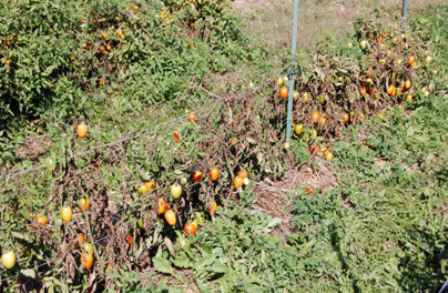

There were a few dark patches that showed they’d been exposed to blight, but they lived on, in fact they thrived and I was still picking fruit in October. On my allotment last year both Oh Happy Day and Crimson Plum came through the difficult season with flying colours. This is an excellent blight resistant beefsteak variety. I like cherry tomatoes to eat whole but plum ones are much better for cooking with.Ĭonsuelo and Cocktail Crush, both cherries were introduced recently and two or three years ago Oh Happy Day (one of my favourites) appeared. I think Crimson Plum is the first blight resistant plum tomato which was something I was really looking forward to. We’ve had Crimson Blush, Crimson Cherry, Crimson Cocktail and last year, Crimson Plum. coronavirus mutate), these new varieties have greater resistance and remain more resistant even when blight changes.īringing hope to outdoor tomato growers all over the UK, Mountain Magic and Crimson Crush were among the first of this new breeding to be introduced. So whereas some of the early varieties lost their resistance as blight mutated (in much the same way that dieseases like rose black spot and, indeed. The healthiness is acheived through more complex modern breeding methods that have allowed them to introduce more than one set of blight resistant genes. More recently there have been very successful programmes of breeding carried out and it seem that breeders have had amateur growers in mind in these, so there’s been an emphasis on getting fruit with good flavour as well as getting plants that stay healthy. Ferline isn’t very resistant in my experience, although Losetto and Lizzano are better. Ferline, Losetto and Lizzano were some of the first to be introduced. Once you’ve seen them they usually spread quickly and infect the whole plant, including the fruit.įirstly, there are old and new blight resistant varieties. If you’re not sure what blight looks like, keep watch for black patches on the plant stems and black blotches on leaves. So the mild, rainy weather that typifies a British summer is perfect for it’s spread and it hits just as the first tomatoes are starting to ripen and you’re looking forward to eating them. These spores land on the leaves and stems of tomatoes where they sporulate (love that word!) when conditions are mild and the leaves are damp – specifically the temperature needs to be above 10 degrees C for two consecutive days combined with relative humidity of 90% for at least six hours. It infects plants through spores carried on the wind, usually from potatoes, especially ‘volunteer’ potatoes that were infected the previous year and left in the ground to regrow the following year. It is caused by a fungal-like pathogen called Phytophthora infestans, or late blight. The blight that affects tomatoes is the same one that will kill off your potato plants. Unless you grow blight resistant varieties. It’s so disappointing when that happens and the trouble is, if you’re growing plants outside in a bad year there’s really not a lot you can do about it.

Down at my allotment site in north London, a lot of people had lost all their plants to late blight by August, before any of the fruit had had a chance to ripen.
Tomatoes resistant to late blight free#
Tomato blight was in its element, it had free rein to spread and infect and the plants were decimated.

2021 on the other hand was much more typical.

The sun shone, the rain stayed away and the tomato plants grew strong and healthy. Where tomato growing is concerned, 2020 lulled many people into a false sense of security.


 0 kommentar(er)
0 kommentar(er)
